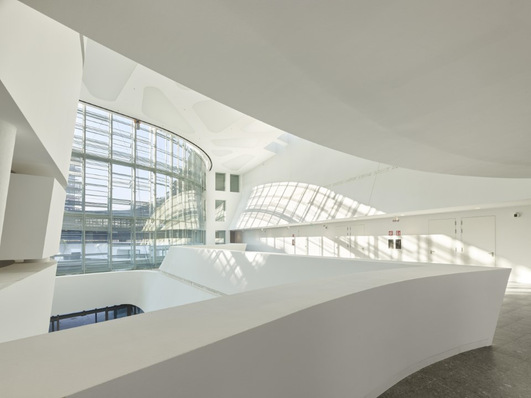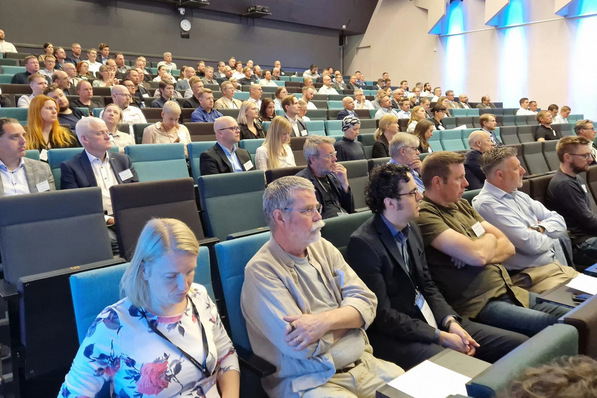At the start of the hybrid event, which was moderated for the first time by Arvind Kumar (Hydro Building Systems Middle East), Benjamin Beer - Managing Director and Head of Facades at Werner Sobek's Dubai branch - addressed, among other things, the exciting question: Which sustainable building concepts of the past can we transfer to the present and future?
The speaker also presented impressive projects such as the shading systems developed by Werner Sobek for the World Expo 2020 in Dubai and the KÖ Bogen II in Düsseldorf. The green facade implemented there makes an important contribution to improving the microclimate on and in the building.
Creating great places for people
Sveinung Chercka-Simonsen, in his function as senior partner and project architect of Schmidt Hammer Lassen Architects (SHL, Copenhagen), first explained the basic working methods of the internationally active firm. The focus is on an overarching methodology or DNA with a flexible "construction kit" of materials and designs. These are adapted to the respective environment and culture depending on the project. The goal?
See also: Schüco: A versatile and flexible office building in Cologne
"We want to create great places for living, dwelling and human encounters." The architect used current references to illustrate what this looks like in practice. The Vendsyssel Theatre Hjørring in North Jutland, for example, fits into the urban environment as a cultural axis and at the same time functions as a new, living organism in the city.
Following SHL's philosophy, the concept was based on five main themes: Integration, openness, functionality, flexibility and materiality. Another highlight: the VIA in Oslo. With its intelligent mix of shops, offices and parking facilities, the building complex directly on the fjord is already considered a new symbol of the city and a prime example of sustainability.
The BREEAM-certified new building was realised with a Closed Cavity facade from Wicona. The same applies to the K8 building complex in the centre of Stavanger, which was also presented. The core of this future-oriented project is a 16-storey tower with 15,000 m2 of flexible space for offices, restaurants, exhibitions and conferences.
What makes buildings liveable?
Christian Eichinger of KSP Engel and head of the Munich office outlined the substantial working method of the internationally active office at the start. "We attach great importance to iterative and integrative work."
This means: a precise definition of the problem is followed by an in-depth analysis - and on this basis, the interdisciplinary team develops the optimal solution. Using impressive projects such as the National Library of China in Beijing, he showed how this approach can be successfully implemented in practice. The "Meixi Urban Helix" project in Changsha looks futuristic.
With "responsible design" to a holistic solution
Finally, Giuseppe La Ferla of Chapman Taylor Global Architects and Masterplanners in Madrid, an internationally experienced project architect, appeared before the audience. The aim of the firm is to find future-oriented solutions by intelligently combining creativity, interdisciplinarity, client orientation and sustainability - from the first sketch to the finished construction. The focus is on "responsible design", according to the speaker.
Also interesting: Glass stakeholders mark 2022 UN International Year of Glass
This means: a design that combines the well-being of people, the respective place and the "needs" of the planet. In this context, Giuseppe La Ferla presented numerous projects of the office and gave detailed insights into facade planning and construction. Mentioned were, for example, the modern office and residential tower "Cinco District" in Lisbon, the optical and energetic renovation of the office building Los Cubos in Madrid and the futuristic "Airport City" in Jeddah.
Watch the event on here:
The recording of the event is available here or via the Next Studio by Wicona + Partners channel on YouTube.













